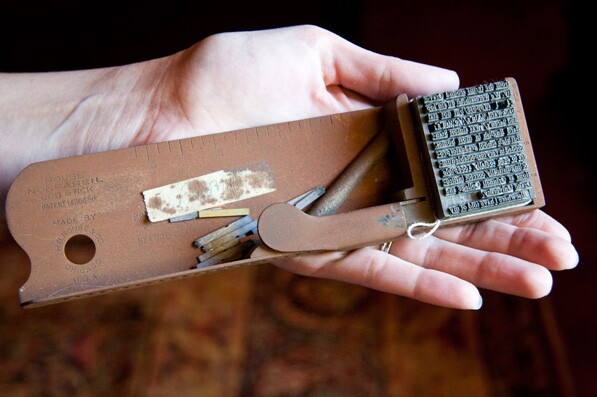How Books Played an Important Role in Southern California's Art & Commerce

This weekend, readers, authors, and other book lovers will congregate on the University of Southern California campus for the annual Los Angeles Times Festival of Books. While Los Angeles' publishing history may not have captured the popular imagination in the way New York's has, book manufacturing and the craft of the book have long been important parts of Southern California art and commerce.
In fact, the Los Angeles Times itself traces its origins back to a book binding shop in central Los Angeles. Known at the time of its 1881 founding as the Los Angeles Daily Times, the newspaper was initially printed at the Mirror Printing Office and Book Bindery, which specialized in a weekly advertising sheet but also manufactured books.

When weak circulation figures forced the Times' early owners to turn the paper over to the printing company, Mirror's owners brought in Civil War veteran Harrison Gray Otis to edit the paper. Three years later, Otis purchased the printing company and its interest in the paper and would eventually transform the Times into a powerful Los Angeles institution.
Throughout the twentieth century, Southern California was home to several printers and artisans who, inspired by the Arts & Crafts Movement, elevated book manufacturing to an art form. The photo below, courtesy of the Autry National Center's Braun Research Library, depicts one such artisan, Idah Meacham Strobridge, who converted the attic of her ranch house into the Artemesia Book Bindery.

Los Angeles philanthropist William Andrews Clark, Jr., founder of the Los Angeles Philharmonic, avidly collected examples of fine printing from what came to be called the Southern California Renaissance. Today, UCLA's William Andrews Clark Memorial Library continues to develop its founders' collections of finely-crafted books and the papers and personal ephemera of the books' creators. The photograph at the top of this post, from the library's William Murray Cheney Papers, shows the Los Angeles-born artist at work in his print shop.

Several of the artists represented in the Clark Library's collections, including Cheney, specialized in miniature books, which showcased the artists' technical mastery. Cheney's creations also showcased his appreciation of irony, as seen in the photograph above of his two-inch volume, Big Type Book.


As headquarters of the Braille Institute of America, Los Angeles was also a major hub of printing for the blind. The organization was founded by a Montana cowboy, J. Robert Atkinson, who lost his sight after accidentally shooting himself during a 1912 trip to Los Angeles. Atkinson, who stayed in L.A. after his accident, learned braille but was discouraged by the lack of available reading material. In 1919, he converted a standard ink printing press to a braille press and began publishing braille editions as the Universal Braille Press.

In the photographs below from the USC Libraries' Los Angeles Area Chamber of Commerce Collection, Universal Braille Press workers use specialized equipment to create the braille books inside the organization's headquarters at Vermont and Melrose.



Many of the archives who contributed the above images are members of L.A. as Subject, an association of more than 230 libraries, museums, official archives, personal collections, and other institutions. Hosted by the USC Libraries, L.A. as Subject is dedicated to preserving and telling the sometimes-hidden stories and histories of the Los Angeles region. Our posts here will provide a view into the archives of individuals and cultural institutions whose collections inform the great narrative—in all its complex facets—of Southern California.


